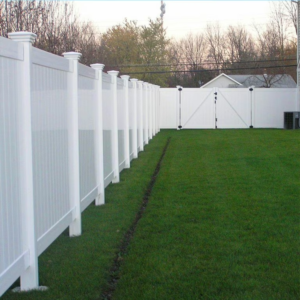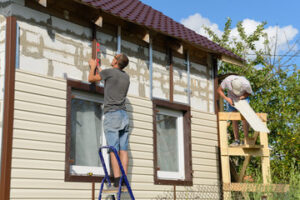Leadership Team Development is about enhancing the skills and capabilities of leaders at an organization. It helps them become more collaborative, strategic, and effective in their roles.

Teams need to collaborate to make great decisions and achieve goals. Creating a positive team culture and building trust is a key part of this. Contact Ripple Effect Culture for professional help.
Effective communication is an important skill for any leader to have, and it’s particularly vital for team leaders. Leadership teams need to be able to communicate a clear vision that inspires team members and encourages a positive work culture. Communication also helps to solve problems and create a sense of unity.
One of the most important communication skills for leadership involves active listening. This involves giving the speaker your full attention, avoiding distractions and not interrupting while they’re speaking. It also means taking notes and asking questions if you don’t understand something or need clarification. In addition, it’s helpful to paraphrase what you heard back to the speaker to ensure there is no miscommunication.
Another important leadership communication skill is the ability to motivate teams. This can be done verbally or through nonverbal cues, such as a nod of approval or eye contact. According to Victor Vroom’s expectancy theory of motivation, people are motivated to complete tasks when they believe they will receive a reward for their effort and performance. Leaders who are able to communicate this motivation to their teams can increase employee engagement and help them achieve organizational goals.
Decision-making is another crucial component of leadership communication. This might involve making minor everyday decisions or major ones that affect the entire company. It’s important that leaders are able to make these decisions in a timely manner and delegate tasks appropriately. This demonstrates that the leader has trust in their team to handle projects without micromanagement.
A strong communication skillset is essential for any leader, but it’s also important to recognize that no one is a perfect communicator. If you know your strengths and weaknesses, you can focus on improving in the areas where you’re lacking. It may take some time to see results, but it’s well worth the effort in the long run.
Strategic Thinking Skills
The ability to see the bigger picture and plan ahead is a key skill of effective leadership. This is not a natural capability for everyone, but one that can be learned and developed. Leadership development programs that incorporate strategic thinking techniques help to equip individuals with a structured approach to decision-making, ensuring decisions align with long-term goals and the organisation’s overall vision.
Analysing critically is another important aspect of strategic thinking, enabling people to evaluate information and ideas from multiple angles and perspectives and challenge preconceived notions. It also helps people understand how different components of a system influence each other and identify possible risks. Strategic thinkers are also able to develop more effective solutions to challenges by exploring possibilities and leveraging existing resources.
A proactive mindset is also an essential component of strategic thinking, allowing leaders to be prepared for any unforeseen issues that may arise. This requires them to keep a finger on the pulse, watching out for industry shifts and global factors that could impact business. They also take a considered approach to risk assessment, weighing potential impacts against the benefits of moving forward with planned initiatives.
Effective leaders are able to identify and address potential obstacles before they become barriers, anticipating what could go wrong and creating contingency plans to ensure the organisation stays on track to achieve its goals. This type of planning and thinking requires a combination of leadership skills, including communication, teamwork, problem-solving, strategic planning, and innovation. It is critical that all members of a leadership team, from executive teams to middle managers, are equipped with these tools so they can work together to achieve their company’s goals and foster a positive culture.
Influence Skills
Influence skills help leaders persuade and motivate others to share their vision and goals. They involve building trust, credibility and rapport with the team, and rely on collaboration rather than coercion. Influence leadership also includes an ability to handle high-stakes situations that often encompass intricate and uncertain factors. Having the right skill set to influence others can make the difference between success and failure for a department, project or even an entire company.
Leaders can enhance their influencing skills by practicing communication techniques that promote discussion and a healthy exchange of ideas. These include dedicating time for open discussions, listening actively and respectfully, considering other perspectives and reflecting on the points made before responding. Clarity of communication is another essential factor, as it helps to minimize misunderstandings and maintain focus.
Developing strong connections with teammates through empathy also fosters authentic leadership and helps build trust. Empathy allows leaders to consider the needs of others in addition to their own and make decisions that support a safe and productive work environment. Lastly, demonstrating a willingness to engage in open and honest dialogue and sharing personal experiences can also help a leader develop their influencing skills.
Leadership influencing skills are a vital component of any professional’s toolkit. While a leader’s need to influence may vary depending on the level of authority, it will always be necessary for a successful career. As companies increasingly adopt matrix structures, quality communication and influencing skills are more important than ever. Whether a leader is at the beginning of their career or an experienced executive, it’s never too late to invest in leadership development that will improve these critical skills.
Conflict Resolution Skills
Conflict resolution is an essential strategy for leaders who want to foster a healthy team environment. This leadership skill encompasses various strategies and best practices for managing disputes and promoting open communication. Leaders who use effective conflict resolution skills promote a culture of respect, which can increase team performance and foster a productive workplace.
To effectively manage conflicts, team members must understand the underlying needs of each individual or group. This allows for a resolution to be reached that fulfills the concerns of both parties involved, instead of one party winning the conflict and leaving others unsatisfied. For example, if a team member is upset about their supervisor’s treatment of them, the leader should listen to the person’s concerns and work to reach an agreement that will satisfy both people.
While conflict is inevitable wherever there are human beings, a healthy and high-performing leadership team is able to handle disagreements and disputes without them derailing the overall mission of the company. This is only possible when all team members are able to communicate openly and respectfully with each other, regardless of whether they agree on something or not.
Leaders who have strong conflict resolution skills are able to keep their emotions in check during heated discussions and confrontations with their colleagues. In addition to having excellent negotiation skills, these leaders are able to remain objective when working through a dispute with team members. This helps to prevent them from taking sides and escalating the situation. For example, if a colleague is making threats or acting aggressively, the leader should take time to calm down and talk to them about what has happened. It is also important for a leader to be able to identify when a colleague is not in the right frame of mind for an argument and may need time to reflect before they can continue with a discussion.
Team Building
Team building is a necessary component of leadership team development. It involves bringing employees together who don’t know each other and creating cohesive working relationships. The resulting bonds enable the group to accomplish its work and goals more efficiently than an unbonded group could.
To develop these skills, a leadership team can use a variety of structured activities, such as conflict resolution workshops, trust-building exercises, and simulation-based challenges like strategic role-playing. These activities help improve communication and collaboration among leadership team members and create a culture of support and encouragement.
It’s important to consider the needs of each individual management member when designing your leadership team development program. A good way to do this is through 360-degree feedback evaluations, which reveal each manager’s strengths and weaknesses. From there, you can fill the gaps by tailoring a program like The CARE Experiencea that suits each person’s unique leadership journey.
If your organization is going through significant changes, team building can also help foster adaptability and ensure that everyone understands the goals and objectives of the new organizational structure. You might want to include a series of workshops on navigating change, collaborative challenge activities that test new leadership roles and structures, or other project-based team building opportunities.
Developing a strong leadership team can give your organization an edge. It can help you manage a crisis, make smarter business decisions, and increase productivity. However, it’s not something that happens naturally; it requires conscious efforts to build the right team. By implementing a comprehensive team building strategy, your leadership team can be prepared to meet the challenges of today’s competitive and fast-changing workplace. This will help you to achieve long-term success for your organization.








